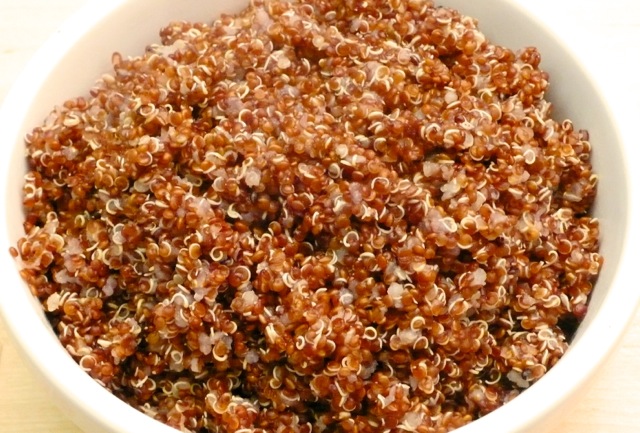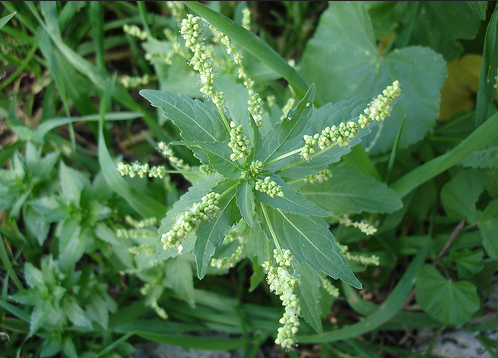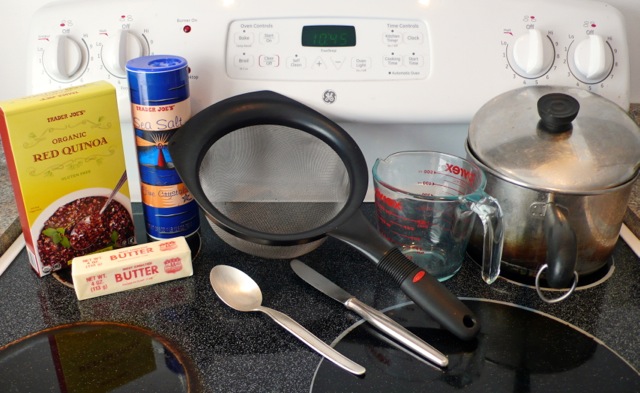Quinoa (pronounced “keen-wah”) is a fully flavorful, highly nutritious seed that’s incredibly versatile to use and easy to cook. Now, before you say “Keen-what”, I know it sounds different, and it’s actually something that’s somewhat new to me. My favorite variety is red quinoa because of its slightly sweet, nutty flavor. But quinoa of any color tastes great and has excellent texture – smooth on the inside with a great mouth pop to it when you first bite on it. And then there’s the incredible nutritional value, which is even more remarkable when you consider the tiny natural package it comes in.
Here are a few things I’ve learned about quinoa. First, quinoa isn’t a grain because it’s not the seed of grass family plant like wheat, oat or barley. Instead, quinoa is the seed of the goosefoot plant. Goosefoot, which gets its name from the shape of its leaves, is a relative of spinach and Swiss chard. Quinoa grows in the South American Andes Mountains, mostly in Chile, Peru and Boliva, where it has been cultivated for over 5000 years. Incan armies sustained themselves on long marches by eating quinoa mixed with fat that they called “war balls”. EMMMMM…
As you’d probably expect from a relative of spinach and Swiss chard, both exceptionally nutritious leafy greens, quinoa packs a potent nutritional punch. It’s a great source of protein as it contains all the essential amino acids that make up proteins including lysine, which is necessary for tissue growth & repair. It has about twice the protein content of barley, corn & rice. Quinoa is gluten-free and is easily absorbed by the body. It’s a good source of manganese, magnesium, iron, copper & phosphorous making it particularly noteworthy for people affected by migraine headaches, diabetes and atherosclerosis. It’s exceptionally high in dietary fiber, and though it does have some fat to it, all of it is unsaturated “good” fat that includes Omega-3. It delivers about 170 calories per ¼ cup serving, 20 calories of which come from the unsaturated “good” fat just mentioned. And it contains no trans fats, cholesterol or sodium, unless you add salt to cooking like I do – just enough for added flavor.
Here’s what you need to cook quinoa on the stove. For a complete, easy to follow step-by-step picture book recipe, just click any picture on this page.

 March 20th, 2013
March 20th, 2013  brucetretter
brucetretter 


 Posted in
Posted in  Tags:
Tags: